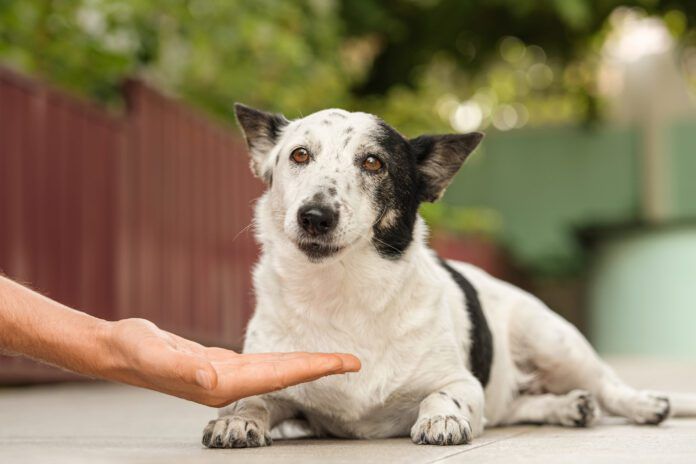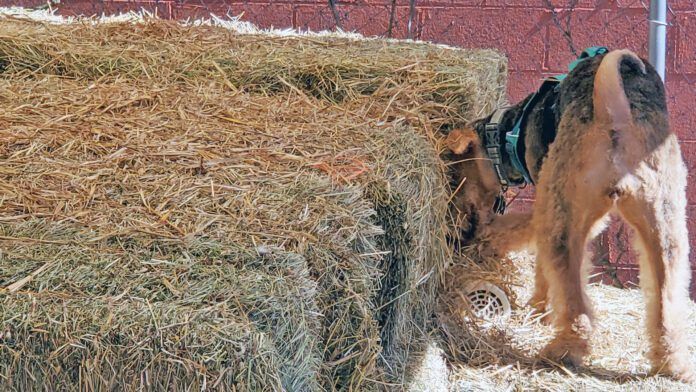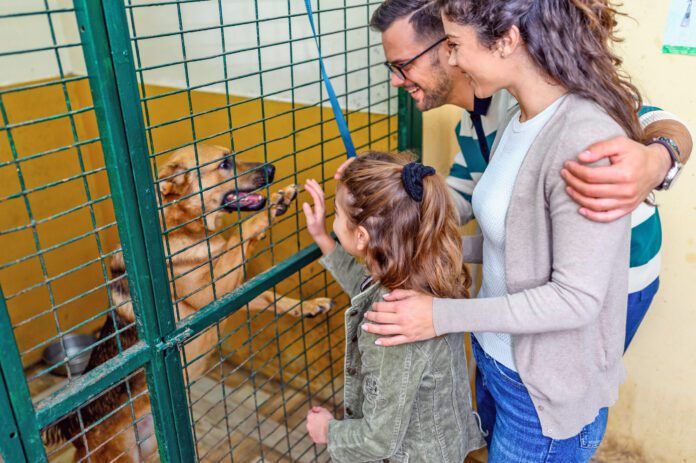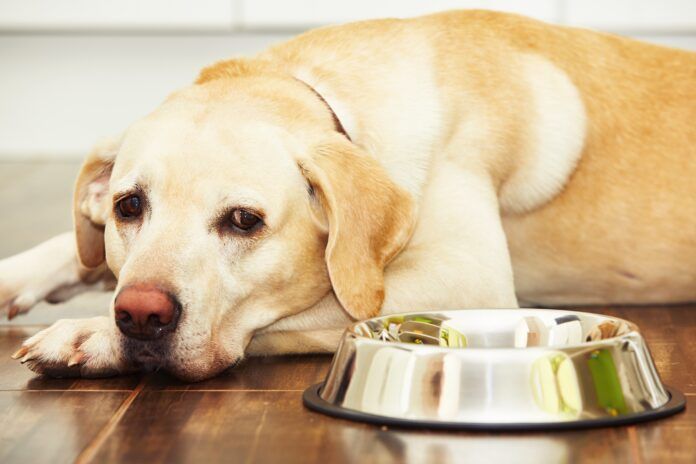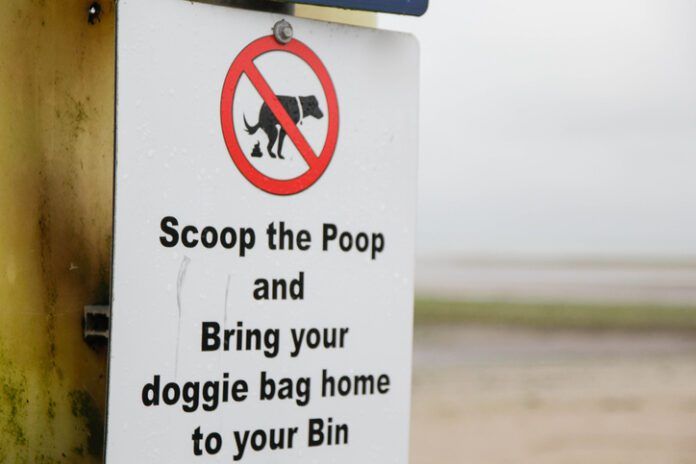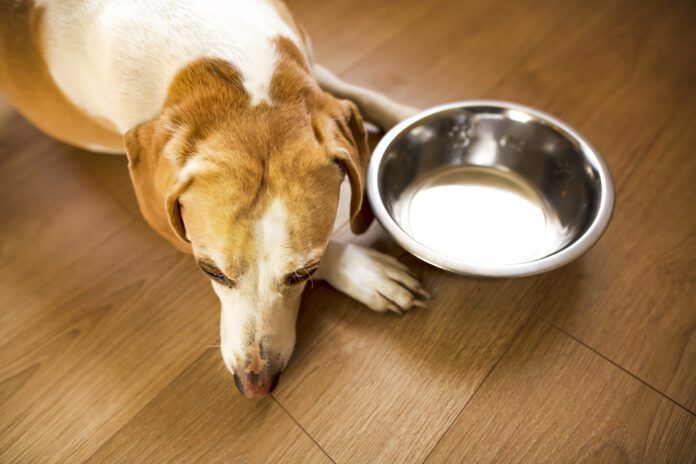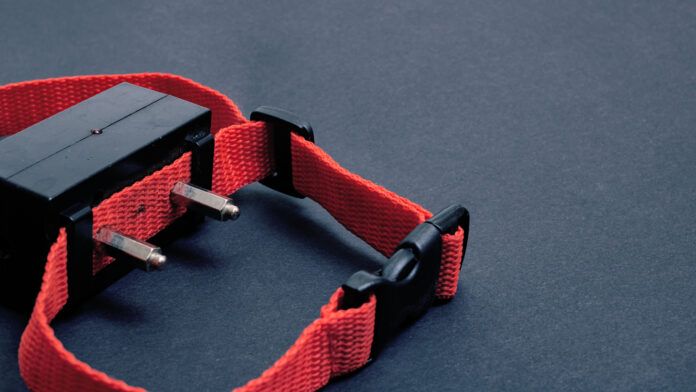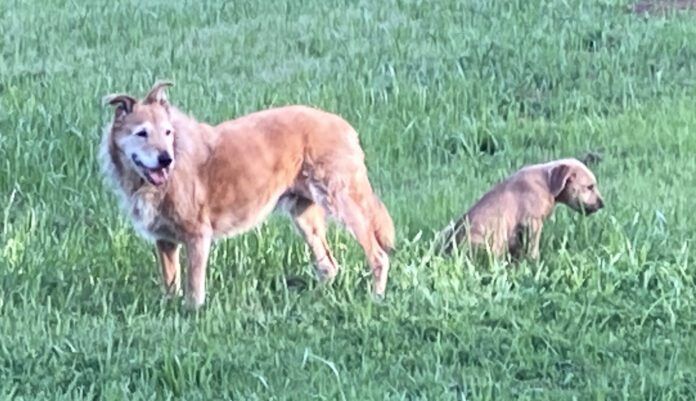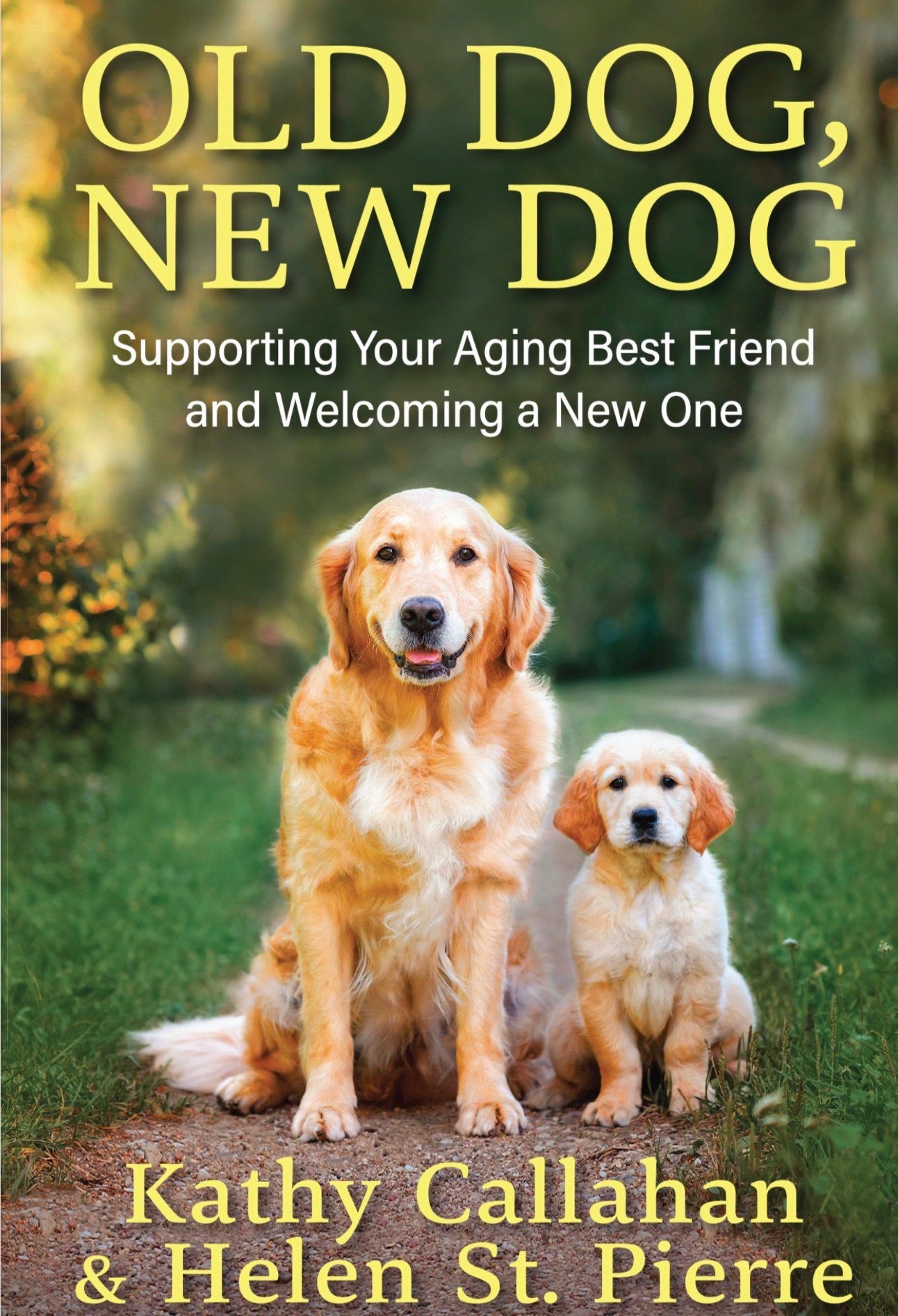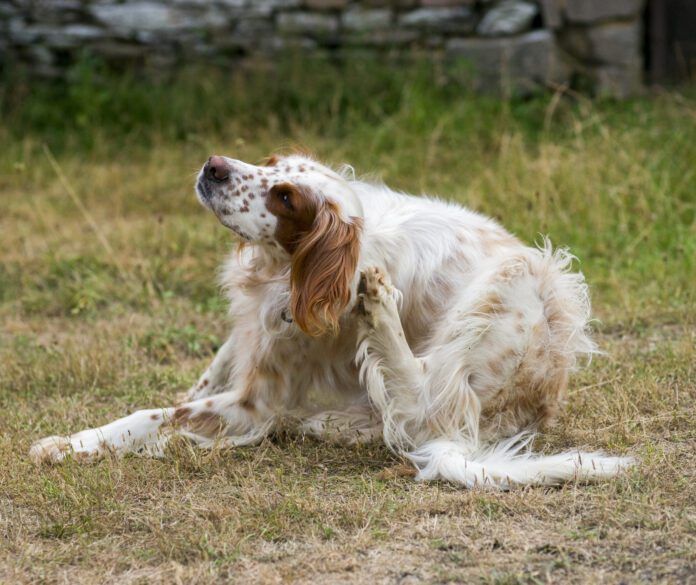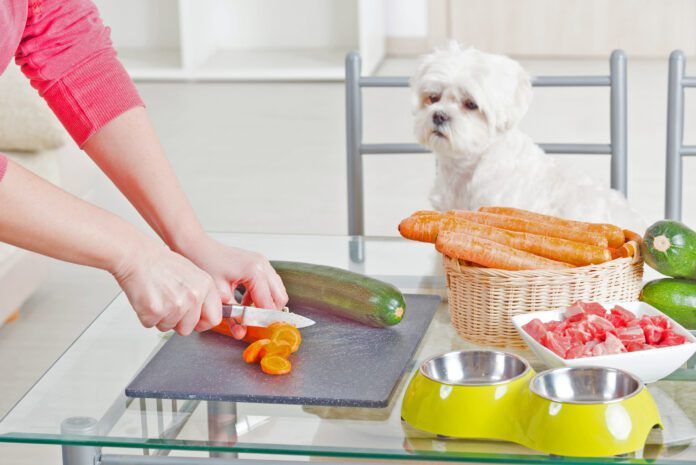Acid reflux, also known as Gastroesophageal Reflux Disease (GERD), is a painful condition in people—and in dogs. Proper diagnosis of this condition in dogs can be challenging because unlike in people, dogs cannot tell us when or where they hurt or the type of pain they are experiencing.
Symptoms of Acid Reflux in Dogs
Symptoms of GERD in dogs include regurgitation, decreased appetite, difficulty swallowing, and acting uncomfortable. Some dogs with GERD may have a chronic cough. You may also notice that your dog’s bark sounds different than it used to. One of the classic symptoms experienced by dogs with GERD is that they are more likely to regurgitate than vomit (see sidebar). However, conditions that cause chronic vomiting may lead to the development of GERD.
When is a Dog Vomiting vs. Regurgitating?
There is a difference between regurgitating and vomiting. Regurgitating is the expulsion of food or water from the esophagus that has not yet made it to the stomach. Vomiting is the expulsion of food and water from the stomach and small intestine.
One of the first signs you may notice with vomiting is that your dog is licking his lips. This is followed by heaving and abdominal contractions. Then your dog will vomit. Regurgitating is a passive process—your dog will suddenly open his mouth and expel food or water. There is no warning that your dog is about to regurgitate.
Knowing the difference between if your dog is vomiting and regurgitating can be a challenge. Take a video of your dog as he is bringing up food or water and show it to your veterinarian. Your veterinarian will help you determine if your dog is regurgitating or vomiting.
What is GERD?
GERD occurs when contents of the stomach flow backwards through the lower esophageal sphincter into the esophagus. The lower esophageal sphincter is a muscular valve that sits between the end of the esophagus and the start of the stomach. This valve opens to allow the passage of food and water from the esophagus to the stomach. The valve closes once food and water have passed into the stomach.
Conditions that either allow or force the opening of the lower esophageal sphincter when there is no food or water trying to pass into the stomach may cause GERD. An open lower esophageal sphincter allows stomach acid to enter the esophagus from the stomach. This harms the mucosal lining of the esophagus.
The lining of the stomach is protected from the caustic nature of stomach acid by a layer of mucus. The esophageal lining does not have this protection. Stomach acid is irritating to the esophageal mucosal lining, leading to the pain and burning sensations that people typically associate with heartburn.
Diagnosing GERD in Dogs
Your veterinarian will start with baseline blood work and radiographs of the thorax and abdomen if she suspects that your dog has GERD. She may also recommend a therapeutic trial of feeding four small meals per day, feeding a low-fat diet, and two weeks of giving sucralfate and omeprazole to see how your dog responds. If the symptoms of GERD persist or do not improve, then she may recommend seeing a veterinary internist (internal medicine specialist).
An internist may recommend an endoscopy to examine the lining of the esophagus and the stomach. Biopsy samples of abnormally appearing esophageal and gastric mucosa may be obtained during endoscopy and submitted for histopathology.
Measuring the pH of the esophagus just north of the lower esophageal sphincter can be helpful in diagnosing GERD. A pH meter can be temporarily implanted in the lower esophagus using an endoscope. The pH meter transmits data to a recording device attached to your dog’s collar. You will be asked to push a button on the recording device when you notice your dog exhibiting symptoms of GERD. You will also be asked to write down the symptoms you observed in a log.
The pH meter naturally detaches from inside the esophagus after about 7 to 10 days. It is small and will move through your dog’s gastrointestinal tract over the next several hours. Your dog will pass the pH meter in his stool.
Other advanced imaging may include a barium study or fluoroscopy. A barium study can be useful in visualizing strictures or tumors of the esophagus. Fluoroscopy is a live-action series of x-ray images. This is used to perform a swallowing study to see how your dog moves food through his esophagus.
Treating Canine GERD
Treatments for GERD include resolving the irritation of the esophagus and treating the underlying cause. Esophageal irritation can be eased by coating the damaged mucosal lining with a medication called sucralfate (also known as carafate). Sucralfate selectively binds to damaged mucosa and protects it from stomach acid while the mucosa heals.
Medications that reduce the acidity of stomach acid may also be prescribed. Famotidine (also known by its brand name, Pepcid) is often prescribed because it is inexpensive, available over the counter, and can be given either on an empty stomach or with a meal. But famotidine may not be as effective as omeprazole (also known by its brand name, Prilosec) in treating GERD.
Famotidine begins to decrease the acidity of stomach juices within a few hours of administration. But its effectiveness begins to wane after several days of taking famotidine. In one study, the effectiveness of famotidine was cut nearly in half by the twelfth day of receiving this medication.
Omeprazole takes about 3 to 5 days to reach its full effectiveness at reducing stomach acidity. This medication is more effective at reducing the acidity of stomach juices than famotidine. But long-term use of omeprazole has been shown to have serious side effects in people. More studies are needed to determine if our canine companions suffer from the same long-term side effects as people.
It is generally recommended to limit the use of omeprazole to a duration of 3 to 4 weeks in dogs. Abrupt discontinuation of omeprazole after receiving it for 3 to 4 weeks has been shown to cause a rebound acidity in the stomach. Dogs should be tapered off omeprazole if they have been receiving it for this long.
Omeprazole may cause elevations in liver enzymes. Use of omeprazole with some medications may increase the length of time these medications remain active in a dog’s body. Diarrhea is also a potential side effect. In addition, omeprazole may inhibit the absorption of medications that require an acidic environment in the stomach to activate.
Other treatments for GERD will depend on the underlying cause. Any condition that causes chronic vomiting or decreased gastrointestinal motility can lead to the development of GERD. More specific conditions that can cause GERD include:
- hiatal hernia
- esophageal tumors and strictures
- esophageal motility disorders
- Brachycephalic Obstructive Airway Syndrome (BOAS)
- undergoing anesthesia
Many of the drugs used while a dog is anesthetized for a surgical procedure may relax the lower esophageal sphincter. This allows stomach acid to enter the esophagus and cause GERD. These episodes of GERD typically last only a few days and are treated with a 7 to 14 day course of omeprazole and sucralfate.
Hiatal Hernias
A hiatal hernia is when part of the stomach enters the thoracic cavity (also known as the chest). The esophagus starts in the throat, travels through the thoracic cavity, and enters the abdominal cavity through a portal in the diaphragm. The diaphragm is the muscle that separates the thorax and the abdomen. The diaphragmatic portal through which the esophagus travels is called the esophageal hiatus.
A ligament originating from the diaphragm encircles and attaches to the esophagus just above the lower esophageal sphincter. The lower esophageal sphincter is located just within the abdominal cavity, south of the esophageal hiatus. If this ligament is lax or becomes stretched, then the lower esophageal sphincter enters the thoracic cavity. Sometimes a part of the stomach can also enter the thoracic cavity through the esophageal hiatus.
A lower esophageal sphincter that is inside the thoracic cavity has less pressure applied to it. The sphincter is more likely to stay open without sufficient pressure applied. Most hiatal hernias are congenital, meaning that a dog is born with the condition. Congenital hiatal hernias can occur in any breed of dog but are more prevalent in Shar Peis and English Bulldogs.
Hiatal hernias can also occur in brachycephalic breeds secondary to BOAS. Trauma can also cause a hiatal hernia but this is rare. Trauma (such as being hit by a car) is more likely to cause a different type of hernia called a diaphragmatic hernia.
GERD secondary to a hiatal hernia can be managed with a medication called cisapride. Cisapride increases the muscular contractions of the esophagus and increases the strength of the lower esophageal sphincter. Sucralfate and omeprazole can be used as needed. Some dogs with hiatal hernias may continue to experience GERD despite medical management. These dogs may benefit from surgical intervention.
Esophageal Motility Disorders
Brachycephalic dogs are more likely to have an esophageal motility disorder that can lead to the development of GERD. Dogs with an esophageal motility disorder move food through the esophagus at a much slower rate. This leaves the lower esophageal sphincter open for a longer period of time. Cisapride or metoclopramide are the medications commonly used to treat this disorder.
Brachycephalic Obstructive Airway Syndrome (BOAS)
Dogs with BOAS are susceptible to developing GERD. These dogs have one or more anatomical obstructions in their upper airway that decrease pressure within the thoracic cavity. This change in thoracic cavity pressure may relax the lower esophageal sphincter and cause GERD. Dogs with BOAS are also more likely to develop a hiatal hernia secondary to episodes of severe respiratory distress.
Dogs with BOAS are more likely to have several problems related to their respiratory and gastrointestinal systems. Surgical intervention to address anatomical abnormalities of their upper airways—including narrow nostrils, elongated soft palate, and everted laryngeal saccules—may improve their quality of life and minimize the risk of developing secondary problems like GERD.
Seek Veterinary Treatment GERD Symptoms
Talk to your veterinarian if you suspect that your dog has GERD. There are other conditions that mimic the symptoms of GERD. Proper diagnosis is necessary to determine the correct treatment plan. Treating your dog on your own with over-the-counter antacids like Pepcid and Prilosec can do more harm than good. Most dogs with GERD have a good prognosis with proper treatment.


